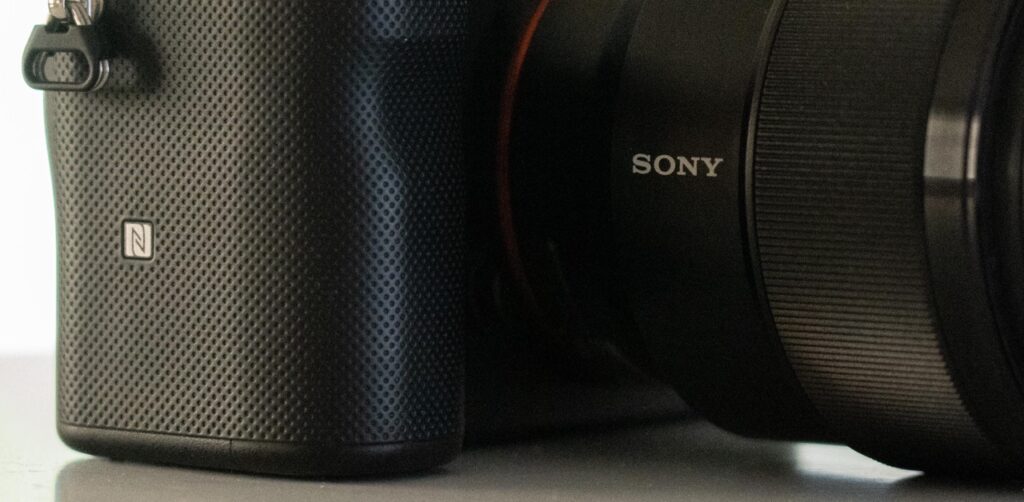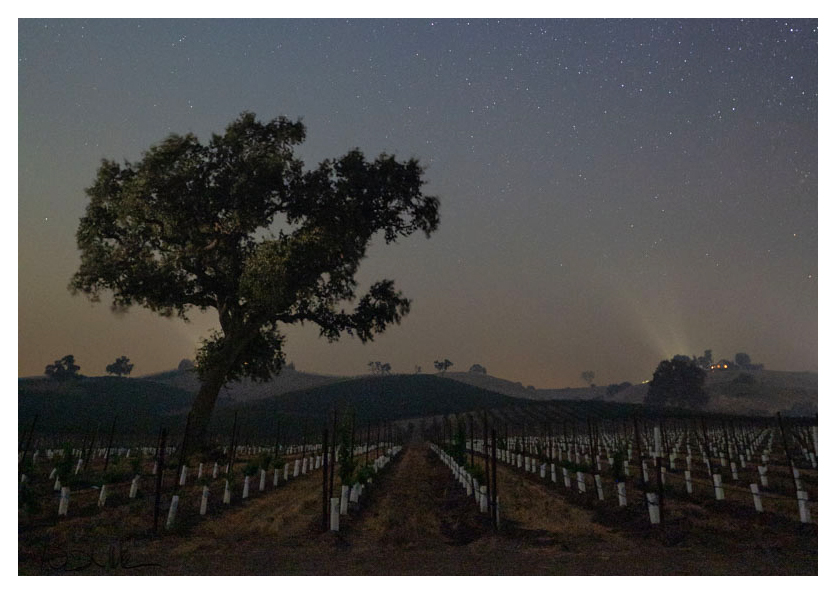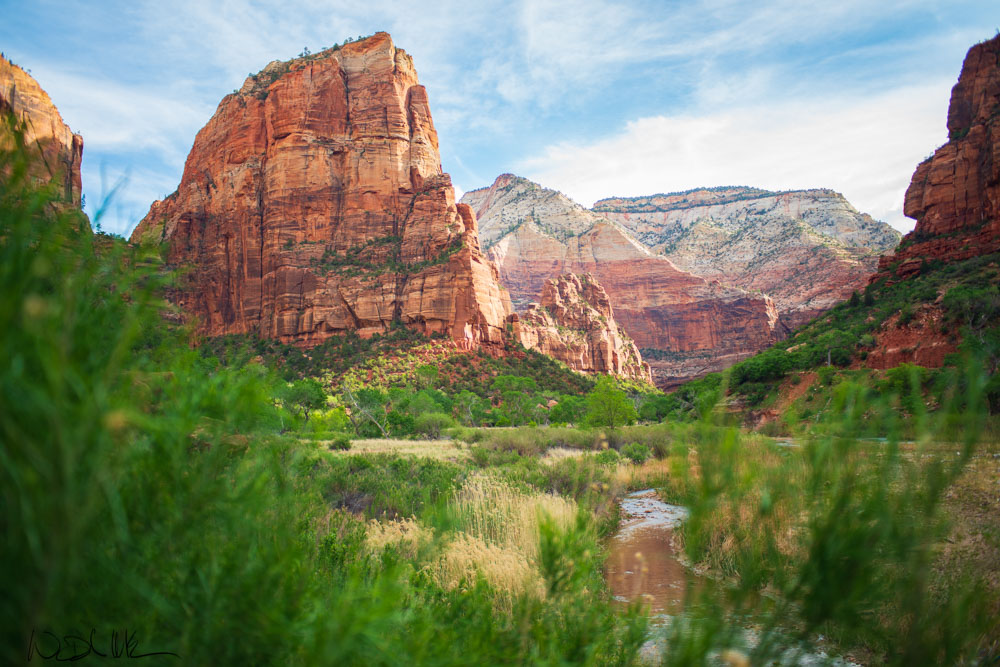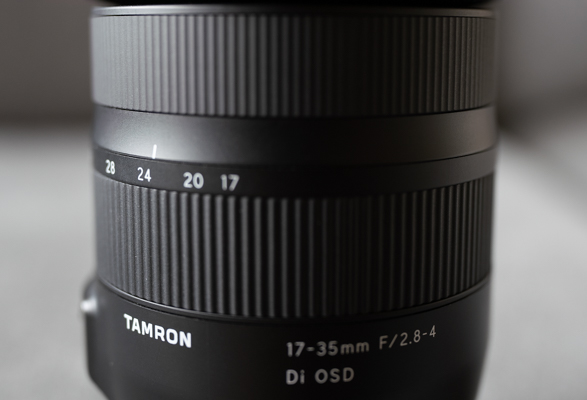The Sony ZV-E1 is one of the best cameras for video because it provides incredible stabilization and AI features.
However, if you plan on using this lens for stabilization or AI, you’ll notice a crop.
If using the gimbal-like dynamic stabilization there is a crop factor of 30%. That will make your 24mm lens become a 31mm lens.
And that’s why you might consider filming with a full frame and APS-C lens.
For most people, the best lens for video on the ZV-E1 is the Sony 16-35 f4, but I would recommend using the Sony 15mm 1.8 for vlogging, and the Sony 35mm 1.8 for everything else.
In this article, I talk about the best lenses for filming yourself, vlogging, and b-roll, and other lenses you might consider. Watch the video review here.
The best lens for interviews
Sony 35mm 1.8
This my favorite lens for its size and weight. It’s fast, sharp, and works great in low light.
1.38 lb / 625 g
The ideal lens or focal length for filming interviews (talking head) is the 35mm lens. 24mm is usually too wide and 50mm is slightly too tight. 35mm is the sweet spot because you can use it for talking headshots, interviews, and b-roll. And if you need to get closer you can always use clear image zoom.
If you need a one-lens setup for everything, the Sony 35mm 1.8 is not a bad choice, but don’t expect it to do any vlogging with this lens. You’ll always need a tripod or someone else to take over.
If you want a little more bokeh, go for the Sony 35mm 1.4 or the Samyang 35mm 1.4.
The best lens for vlogging
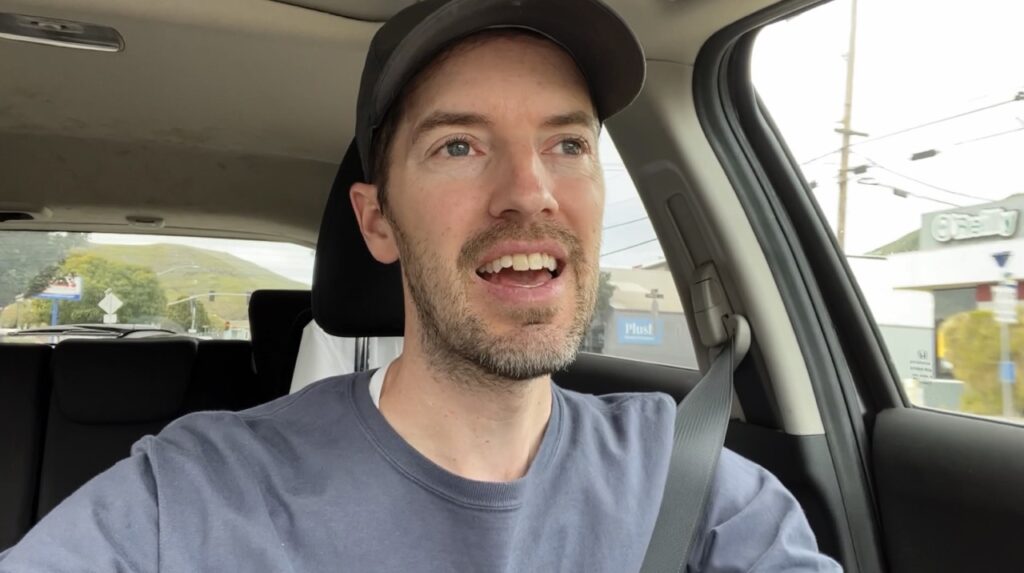
The best lens for vlogging on the ZV-E1 is the Sony 15mm 1.4 because of the 30% crop with dynamic stabilization. The Sony ZV-E1 has both an active and dynamic stabilization feature. The active stabilization crops 1.2x while the dynamic stabilization crops 30%.
For vlogging, it’s best to use an ultra-wide angle lens to reduce the crop factor. The best lenses for this are the Sony 16-35mm f4 or the 14mm 1.8. The problem is the 14mm is too heavy and the 16-35mm isn’t great for low light or bokeh.
That’s why the Sony 15mm 1.4 is the best option. It’s small, lightweight, great for low light, and can improve the bokeh in your video.
It can also be used with clear image zoom if needed, and it’s affordable.
You might be able to get by with the Sony 20mm 1.8 for vlogging, but if you use active stabilization it will be difficult to get wide footage.
The best lens for B-roll
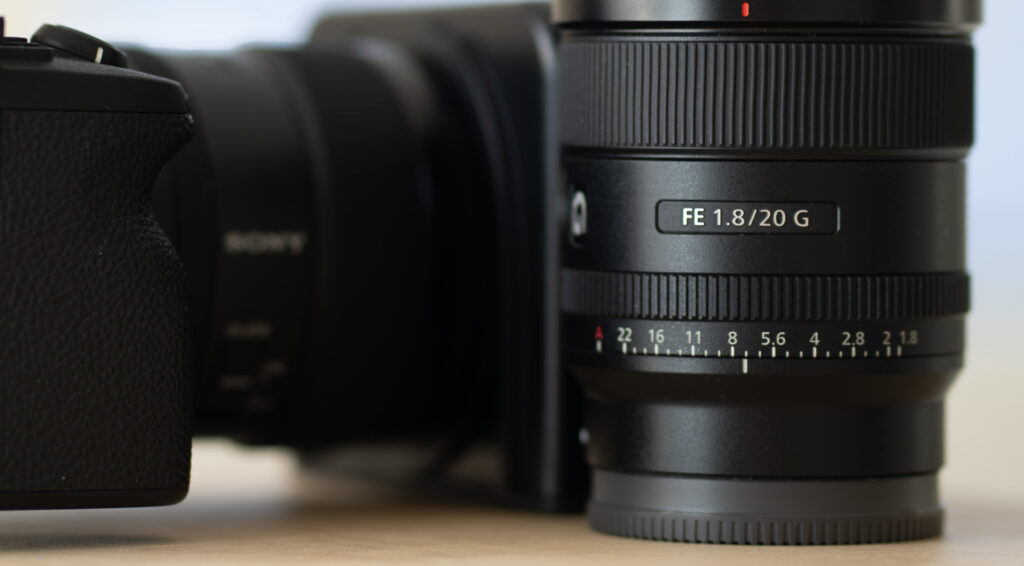
For B-roll, the Sony 35mm 1.8 is perfect for most situations. You can also use clear image zoom to get a 50mm 2.8 equivalent.
It’s perfect for events, weddings, product reviews, and landscapes. It’s small and lightweight, and it’s a great size lens for the ZV-E1. This is the lens I use most of the time on my camera for YouTube, and it’s a great all-around lens that allows you to zoom with your feet.
The single best lens for content creators
If you can only have one lens for filmmaking I would recommend the Sony 16-35 f4 or the Tamron 17-28 2.8. Both lenses are lightweight, affordable and have great low-light performance.
I prefer the Sony 16-35 f4 because it’s so small, and it has a zoom switch built into the lens. It’s really made for smaller full-frame cameras, and it’s incredibly sharp with excellent autofocus. Since this is a native lens you won’t experience focus breathing like you will on 3rd party lenses. It’s an excellent choice for any filmmaker, vlogger, or content creator.
The Tamron 17-28 2.8 would be your best option if you want to retain the small lens size but you need a faster aperture. In general, I prefer a 2.8 lens for low-light situations, and I generally prefer a larger aperture of 2.8 or wider unless I need to show the environment.
If you’re mostly filming interviews or headshots, I would highly recommend going with the 17-28 2.8 especially if you have a background full of distractions. If you have a staged background that looks great like Gerald Undone, an f4 lens will be perfect for your need.
For me, choosing a lens is all about how much environment you want to include in the background and the likelihood that you’ll need a good lens for low light.
The best two-lens setup
If I could only have two lenses with this camera, and I was doing vlogging, I would get the Sony 15mm 1.8 and the 35mm 1.8. These two lenses, in combination with clear image zoom, will give you a zoom range that is perfect for most content creators.
If you’re on a budget, go for the Samyang 18mm 2.8 and the Samyang 35mm 1.8. This setup is extremely affordable and a great ultralight setup. The 18mm 2.8 isn’t perfect for vlogging with the crop, but it will work. I also tend to use my iPhone for vlogging videos, and this is a great alternative for anyone on a budget.
One other alternative is the 16-35 f4 by Sony and the Sony 35mm 1.8. The Sony 16-35 is perfect for most situations, but it won’t give you the maximal aperture and low light performance for night events. But if you don’t typically shoot at night, and you’re content with the bokeh of f4, you’ll probably love the small form factor of this lens.
The Sony 16-35 is a great versatile lens to always have on your camera, and the 35mm 1.8 or even a 50mm 1.8 would be a great lens for when you need a larger aperture.
Summary
Here’s a summary of the lenses I recommend for the Sony ZV-E1. You can also watch my full video review here.
Best Vlog lens
Best for head shots and B-roll
Best zoom
Best budget
There’s not a perfect lens for the Sony ZV-E1 for video, but most creators will find that a simple prime like the 35mm 1.8 or the Tamron 17-28 2.8 will do everything they need. The Cons of having a prime will always mean less versatility, but sometimes that helps you become more creative. I hope you enjoyed this article, and feel free to subscribe below or check me out on youtube.

